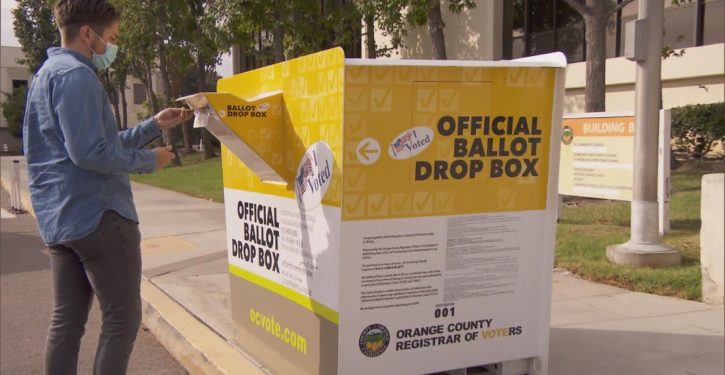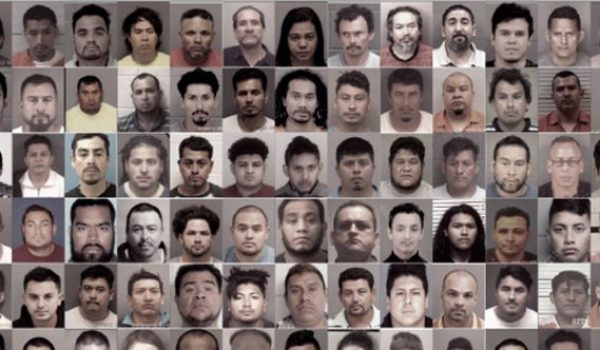
A historic milestone will be reached in the 2024 election, likely to generate political power surges across the electoral landscape.
Demographic data and current trends analyzed by the Pew Research Center found that Latinos or Hispanics are “projected to account for 14.7 percent of all eligible voters in November 2024, a new high.” For the first time, Hispanic voters are expected to surpass Black voters as a percentage of the electorate, after each group comprised 13 percent of voters in the 2020 presidential election.
Exit polling results preserved by the Roper Center show how, over two decades, the Hispanic vote grew to equal the Black share of the electorate. In 2000, Hispanics accounted for 7 percent of voters, with Blacks at 10 percent. In Barack Obama’s 2008 election, the share of Black voters grew to 13 percent, whereas Hispanics expanded to 9 percent.
The 2016 Trump-versus-Clinton matchup saw Hispanics grow to 11 percent while Blacks dipped to 12 percent. Finally, in the 2020 election, Black and Hispanic voters tied at 13 percent each.
With the Black vote stagnating at about 13 percent since 2008, the growing Hispanic vote is now expected to meet and exceed it, becoming the nation’s second-largest voter group.
Shifting from voter percentages to numbers, in January 2024, Pew Research estimated that 36.2 million Hispanics are eligible to vote in 2024, up from 32.3 million in 2020. Astoundingly, those numbers represent 50 percent of the total growth of all eligible voters.
With such exponential growth, Hispanic voters take center stage in 2024. All eyes are on the fierce battleground state of Arizona, where they will account for nearly one in five voters. According to a recent Emerson College/The Hill poll, Donald Trump leads President Biden in Arizona 46 to 43 percent in a tough fight for the state’s 11 electoral votes, when in 2020, Biden eked out a surprise win by only 0.3 percent of just over 3.3 million votes.
Although Arizona ranks fifth among states with the largest Hispanic population — behind California, Texas, Florida, and New York — it is the only one where the outcome of the 2024 presidential election seems uncertain.
From a perspective well beyond the 2024 election, Hispanics are beginning to mirror emerging voter groups that changed American political history starting in the 20th century. The gender and racial composition of today’s elected leaders reflect the success of those movements.
Women were the first significant voter group to emerge after being granted the right to vote in all 50 states upon ratification of the 19th Constitutional Amendment in 1920. Fast forward 100 years to the 2020 presidential election, and women as a percentage of the electorate surpassed men (52 to 48 percent), as they have in every presidential election since 1984.
Black Americans were the second major voter group to emerge, facilitated by two legislative acts. First, the 24th Amendment, outlawing poll taxes, was ratified in 1964. The Voting Rights Act of 1965 soon followed. Both laws endeared the Democratic Party to Black voters, to which they have remained steadfastly loyal ever since.
The exit polling data show the astronomically high percentage of Black American support for Democratic presidential candidates, ranging from a low of 83 percent for Jimmy Carter in 1976 to a high of 95 percent for Barack Obama in 2008. It averages around 86 percent. Joe Biden won 87 percent of the Black vote in 2020, slightly lower than the 89 percent that Hillary Clinton had earned in 2016.
Donald Trump’s support from Black voters was 12 percent in 2020, a 4-point increase from 8 percent in 2016. Trump’s ability to win Black votes in battleground states will be something to watch for this year. Currently, Black voter support for Biden appears to be flagging and, potentially diminishing his chances of winning battleground states such as Georgia, North Carolina, Michigan and Pennsylvania.
Although Black Americans have historically voted as a block, Hispanic loyalty to Democrats is far less certain. On average, they vote about 66 percent Democrat. In 2020, Trump improved his percentage with Hispanic voters, taking 32 percent, up from 28 percent in 2016.
The latest census data show Hispanics making up 19.1 percent of the population, compared to Blacks at 12.6 percent and non-Hispanic whites at 58.9 percent. Those percentages portend the dramatic national power balance shift now underway between Blacks and Hispanics, further complicated by the shrinking non-Hispanic white population.
To the extent that a cohesive “Hispanic vote” exists, the 1 million young Hispanics turning 18 every year represents a steady stream of demographic voting power. Thus, a front-burner question for political strategists is how many of these young Hispanics plan to register and turn out to vote.
The second question is whether they will still vote 66 percent Democratic as in decades past, giving Democratic presidential candidates the margins on which they have depended. Alternatively, are they headed in the same direction as other formerly Democratic Catholic ethnic groups, who shifted dramatically toward Republicans in the late 20th century, leading to today’s evenly-split Catholic vote?
That’s for Republicans and Democrats to fight over this year, and well beyond the 2024 election.
Myra Adams writes about politics and religion. She served on the creative team of two GOP presidential campaigns, in 2004 and 2008.
Cross-posted at The Hill and Substack.



